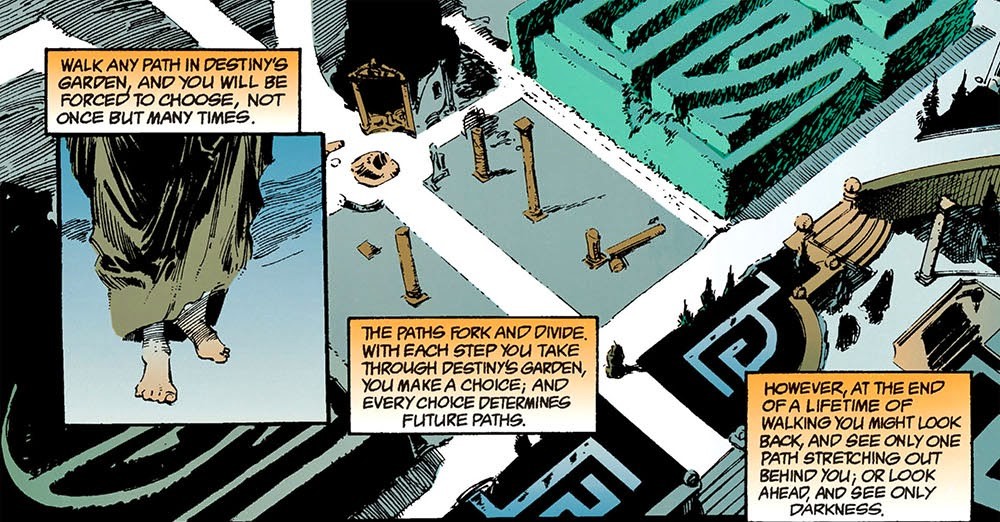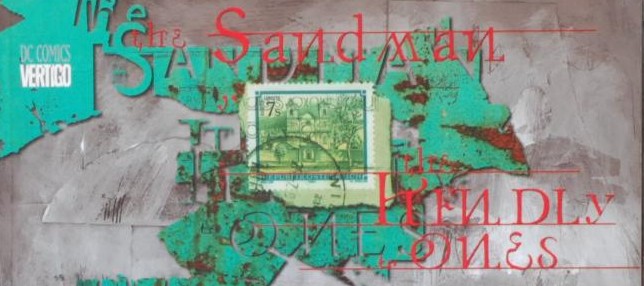The Doll’s House is volume 2 of The Sandman but it was actually the first collection (and the early editions included “The Sound of Her Wings” too). It’s not quite accurate to say this is where The Sandman really begins because Neil Gaiman is still figuring out what direction this comic is going to take, but it’s clear he was realizing this was just a way to tell stories.
It’s still a bit of a mess, though, to be honest. It’s pulling in so many different elements that it doesn’t really know how to bring them all together. You have two side stories, a convention of serial killers, wrapping up the storyline of one of the other previous characters called The Sandman, lost family members, the introduction of two more Endless siblings, and then the whole “Dream Vortex” thing. It’s probably too much to stuff into 8 issues of comics.

The main lead in The Doll’s House is a young woman named Rose Walker. With her multicolored hair and approachable intelligence, she provides a good entry point for readers, especially young women. This time it struck me that there’s nothing particularly special about Rose and we don’t know that much about her or her life overall, other than she’s looking for her long-lost brother. But that’s why she works — readers can project onto her whatever they want. I do remember being a teenager and finding myself identifying with her. It’s not that I ever quite wanted to be her, but it was great seeing a character that felt normal and real while still being a bit aspirational. Beyond trying to find her brother, she’s also the Dream Vortex.
Of everything, the Dream Vortex part is the weakest. As much as I want to make allowances for this being a monthly comic and everyone was still figuring it out, I sincerely don’t think there was really that much of a plan as to what the “Dream Vortex” was supposed to be or do. Dream even says at one point “Even I don’t know why” when it comes to this whole thing. It definitely feels like a case “well, it sounds cool so we’ll worry about that when we get there.” The conclusion just fizzles out on that whole thing. It’s better forgotten.
(I asked someone who was reading The Sandman monthly as this storyline was first coming out if it worked better that way and I was told no, it didn’t. Now, that’s just one person’s opinion, but I still believe it.)
I do like all the variations of the dreams that we see as Rose is pulling everyone’s dreams toward her (or however it works). Artists Mike Dringenberg and Malcolm Jones III have a lot of fun here, as they switch between art styles, evoking the ever-changing nature of dreams. If nothing else, The Sandman always does a good job at capturing what dreams actually feel like.
Much like Gaiman did with the Wesley Dodd Sandman in Prelude & Nocturnes, he had to somehow deal with the Garrett Sandford/Hector Hall version of The Sandman and while those scenes are well integrated enough, this is a fairly deep dive into DC Comics and the context is going to be lost on most readers. I know enough about comics and it mostly was on me. Gaiman did what he could but unlike the use of some other DC characters previously, this comes across like he’s just trying to get it out of the way. I do like the pages that mimic Winsor McKay’s Little Nemo, though.
The serial killer convention stuff feels too much like an attempt to be “edgy” now. Maybe it did at the time, too, but I remember thinking it was kind of scary and cool when I first read The Doll’s House. Now it just feels a bit tiresome. I think a decade of true crime podcasts and documentaries and just the general state of the world make it less appealing to me.
The two stories that are unconnected to the overall narrative of The Doll’s House — “Tales in the Sand” and “Men of Good Fortune” are great diversions and also allow Gaiman to stretch what The Sandman could be capable of. Freed from the constraints of having to tell a complete multi-issue story, these let his writing shine in a way it doesn’t elsewhere.
While a white Englishman doing a pastiche of an African folktale could have been a bit cringeworthy, “Tales in the Sand” mostly works. It seems well-intentioned and respectful. I would hope, though, it’s something he’d approach differently now. “Men of Good Fortune” (with guest artist Michael Zulli) is about a man who decides not to die (Death allows this) and his ongoing friendship with Dream. It’s a fun one.
The introduction of Desire and Despair is a good one and we definitely learn more about The Endless as a family and how they work. For all the underdeveloped parts of The Sandman so far, The Endless concept always comes across as the most complete.
I tried to read The Doll’s House with as much of an open mind and a willingness to have a fresh perspective on it as I could, but that mostly proved impossible. It’s flawed and I saw the cracks in it a bit more, but it’s ambitious and confident and I appreciate that about it. It will never be my favorite of The Sandman volumes, but I love how much it points to what’s to come.




